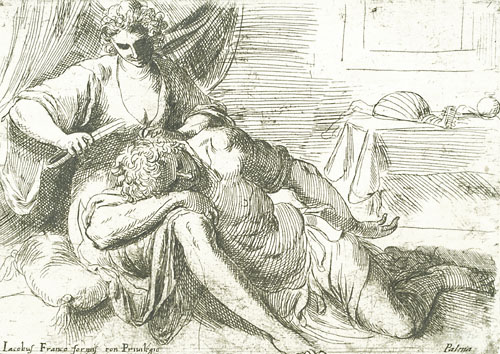| ||
|
Jacopo Palma il Giovane Italian, 1548-1628 Samson and Delilah, 1611
Museum Purchase The airy scratchiness and carefree sexy looseness of this sketch-like image by the foremost Venetian painter of his time seem almost to belie its dire subject matter: Delilah is about to strip the sleeping Samson of his supernatural strength by cutting off his hair. In the Medieval and Renaissance periods, this biblical story exemplified the immense Power of Women over men of strength and/or wisdom. Such power was usually seen as reminding us of the sin of Eve, who seduced the human race to its Fall. But defenders of women, like the Medieval writer Christine de Pizan, pointed out that the male accusers of women were merely blaming women for their own weakness. Moreover, a truer Power of Women could perhaps be interpreted or read in another way as a power for virtue. This is the rare but perhaps truer reading of Christine, at any rate, who says:"...I see the endless benefits which have accrued to the world through women and nevertheless these men claim that there is no evil which has not come in the world because of them." With bitter humor, Christine suggests that the words of the accusers of women should be read contrary to their literal meaning: "....do you not know that these [misogynist] writers spoke on many subjects in a fictional way and that they often mean the contrary of what their words openly say? One can interpret them according to the grammatical figure of antiphrasis, which means...that if you call something bad, in fact, it is good, and also vice versa." It might also be worth mentioning that Samson asleep in Delilah's lap reminds one a little of the dead Christ cradled in the lap of Mary. In addition, if women can overcome men of wisdom or strength, doesn't that mean that women may be stronger and wiser? Or is this thought the perversity of Chaucer's Wife of Bath? |
